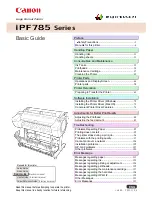
3-1
Paper can be loading into 4 locations in this copier:
the 3 drawers[cassettes] and the multi-bypass tray.
(1) Note when adding paper
After taking new paper out of its packaging, be sure to fan through
them a few times to separate the sheets before loading the paper into
a drawer[cassette] or setting the paper on the multi-bypass tray.
Set the paper in the drawer[cassette] or on the multi-bypass tray with
the side that was facing upward when you opened the package still
facing upward.
IMPORTANT!
• When copying onto used paper (paper which has already been
copied onto at least one side), DO NOT use paper that is stapled or
clipped together as this can be the cause of damage to the copier
and/or create problems in the copy image.
• If you use paper that is curled at all, straighten the paper out before
loading it into a drawer[cassette] or setting it on the multi-bypass
tray, or it can cause a paper jam.
Section 3
PREPARATIONS
1. Loading paper
IMPORTANT!
Using special paper
In this copier, the type of paper loaded in each drawer[cassette] and
on the multi-bypass tray can be specified under “(1) Paper size and
type” on page 6-10, respectively.
Among the special paper that can be use with this copier, there is a
wide range in paper quality and construction, especially in those types
of paper noted below. For that reason, there is a greater possibility of
problems occurring during copying with these type of paper.
Whenever you do use such special paper as noted here, it is
recommended that you first make a test copy and verify the results.
<Special paper for which extra caution is recommended>
• Preprinted
• Labels *
1
• Prepunched
• Envelopes *
2
*1: When using label sheets, be absolutely certain that there is no
possibility that the backing glue will come into contact with any part
of the copier, and that none of the labels will come off the sheet
during copying. If glue does happen to come into contact with the
drum or rollers, or one of the labels comes off inside the copier,
it can be the cause of major damage.
*2: The following types of envelopes should never be used:
• Those on which the glue is exposed.
• Those whereby glue will be exposed if the protective paper is
removed. (If the paper protecting the glue comes off inside the
copier it can be the cause of major damage.)
• Those of special construction.
• Those which have a round tab on the back and are closed with
string.
• Those which have an open window.
• Those which have a transparent film window.
Summary of Contents for Omega D 630
Page 46: ...Section 5 OTHER CONVENIENT FUNCTIONS 5 10 ...
Page 62: ...Section 6 COPIER MANAGEMENT FUNCTIONS 6 16 ...
Page 89: ......
















































